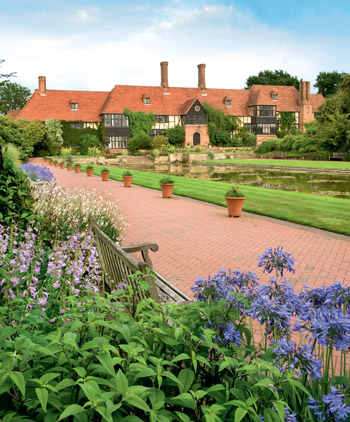The aptly named Jim Gardiner tells us about his role as Director of Horticulture at Wisley and having one of the country’s best commutes

I always like to think that Wisley is 200 acres of horticultural inspiration,” says Jim Gardiner. “We have a fantastic fruit collection, alpines, glasshouses, woody plants and herbaceous borders. It’s all aimed, I suppose, at the gardener.”
As one of the Royal Horticultural Society’s (RHS) gardens since 1903 Wisley has significant pedigree and Gardiner describes it as one of the great gardens of the world. It’s also probably one of the most diverse gardens anywhere and the research taking place there is complimentary to the work that’s being undertaken 25 miles away at the Royal Botanic Gardens, Kew.
“It’s a huge demonstration garden, but a very attractive one, so you can see roses and herbaceous plants in a fantastic setting,” says Gardiner. “We have about 900,000 visitors a year and attract people of all interests and all ages – from those who just come for a morning or afternoon stroll and a cup of tea, right the way through to serious gardeners who bring notebooks and cameras wanting to get ideas and inspiration. We also have a horticultural training programme here and we’re very much seen as an educational resource.”
Gardiner has been working at Wisley since 1988 when he began as curator. He says he is very much a practical, practising gardener, having trained as a horticulturalist, and has worked in a number of gardens around the country. He came into his current post as Director of Horticulture in May 2010.
But he not only works at Wisley – he lives there too. “It’s absolutely fantastic to live and work at Wisley,” he laughs.
“I couldn’t wish for a better job, or commute! I must be one of the few people who purposely makes my journey to work longer because I enjoy it so much. Actually I keep on pinching myself – being able to be here morning, noon and night is just amazing.”

The British love their gardens and Gardiner agrees that gardening is a particularly British pastime. “We’ve got this tremendous climate – it’s brilliant simply because you’re not going to know what to expect. It’s also extraordinarily challenging.” British gardeners and collectors have been bringing plants into this country from around the world for the last few hundred years despite our changeable weather, and now the complexity and diversity of plants in gardens such as Wisley, and in private gardens across the country, is breathtaking. “When you consider that across the country there’s a huge, substantial acreage just devoted to gardens – probably about 650,000 acres – it’s no wonder we’ve got this huge diversity,” says Gardiner.
There is the Garden Club of America and various other horticultural organisations around the world but the RHS is unique and distinctive in that there’s no other organisation that has the same strength and depth. The society has in the region of 370-380,000 members and it is an extraordinarily diverse set of people that subscribe. Gardiner says there are also about 40 scientists working for the RHS, not to mention the society’s additional ventures such as the world’s finest horticultural library, the Lindley Library, and The Garden magazine.
Gardiner’s role is ambassadorial but he makes sure he keeps his finger on the horticultural pulse. He is based at Wisley but regularly visits the other three RHS gardens at Hyde Hall, Rosemoor and Harlow Carr on a fairly regular basis. He also likes to explore other gardens in the UK and overseas: “This year I’ve been down to Overbeck’s near Sidmouth – South Devon is an amazing, fantastic place. I’ve also been to visit west-coast Scottish gardens in Argyll and they’re hugely distinctive as well.
“I think that if you go to any of our gardens you’ll be in for an absolute treat, irrespective of what time of year it is.
Say for instance you’re coming to Wisley in winter, although obviously there isn’t a huge amount of colour, you are able to see the structure of the garden and the beautiful stems at that time of year. But you can also come to the garden to see tropical plants at our amazing bicentenary glasshouse, which is two-thirds temperate and one-third tropical.
HM The Queen opened it in 2007 and it’s a real treasure house of plant material. In January and February we have tropical butterflies there as well. The beauty of all our gardens is that we’ve got something for everyone.”





 © 2024
© 2024